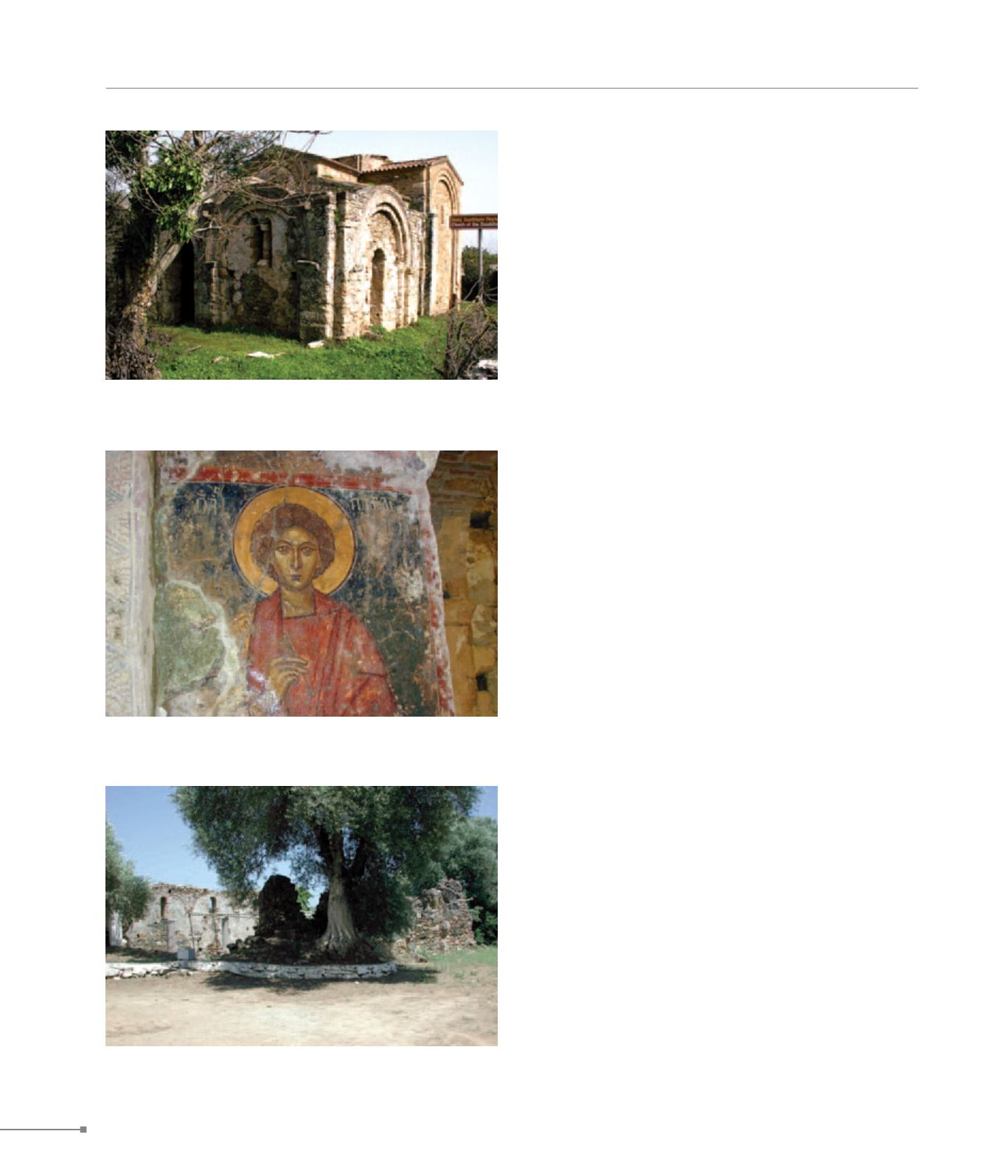
Alikianos.
Varypetros.
CRETE
248
368. Episkopi Aghias, Koimisis of the Theotokos (Επισκοπή Αγιάς,
Κοίμηση της Θεοτόκου)
367. Alikianos, Zoodochos Pege, wall painting of the second layer
(Αλικιανός, Ζωοδόχος Πηγή, τοιχογραφία β’ στρώματος)
367. Alikianos, Zoodochos Pege (Αλικιανός, Ζωοδόχος Πηγή)
367.
Alikianos.
Between the villages Alikianos and Koufos is the church of
Zoodochos Pege, also called Ai kyr-Yiannis, in dedication to
the founder Ioannis Xenos (also known as Eremites − Hermit).
Built circa 1030, when Ioannis Xenos was active in W Crete,
it is a domed, cross-in-square church with strongly project-
ing horizontal crossarms. The surfaces feature double blind
arcades. A tripartite narthex decorated with two layers of wall-
paintings has been added in the W section of the church. The
second layer is the work of an academic painter of the first half
of the 14th c. The church was restored circa 1950. Within the
village survives the cross-vaulted church of Saint George with
wall-paintings of the mid-14th c. It was destroyed by bombing
and then restored.
368.
Episkopi Agias.
At a short distance SW of Chania is the ruined church of the
Koimesis of the Theotokos, a three-aisled, originally timber-
roofed, basilica with projecting transept (5th c.). After the liber-
ation of Crete from the Arabs, the basilica was converted into
a simple, three-aisled church with no transept, while semicir-
cular apses were added to the side aisles. It was frescoed and
the aisles roofed with groin vaults. The reconstructed church
served as the cathedral of the bishopric of Cydonia, which was
transferred inland and renamed Agia. During Early Venetian
rule (13th c.), while the church was the seat of the bishop of
Agia (who later returned to Chania), it was subject to a timber-
roofed reconstruction.
369.
Varypetros.
The Kastelos fortress lies S of Varypetros. Its enclosure occu-
pies, roughly, two successive peaks across an area of 40 ha
and consists of a robust bulwark, alternating semicircular or
rectangular towers, and curtain walls. Part of the hill remains
unfortified due to the steep ground. Within the enclosure are
structural remains, especially cisterns. The fortress visually
controls the Gulf of Chania and was constructed after the lib-
eration of Crete from the Arabs, possibly so that coastal Cy-
donia could be transferred inland, under Byzantium’s policy
framework for the island’s defensive reorganisation.


